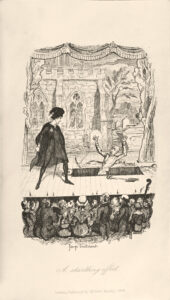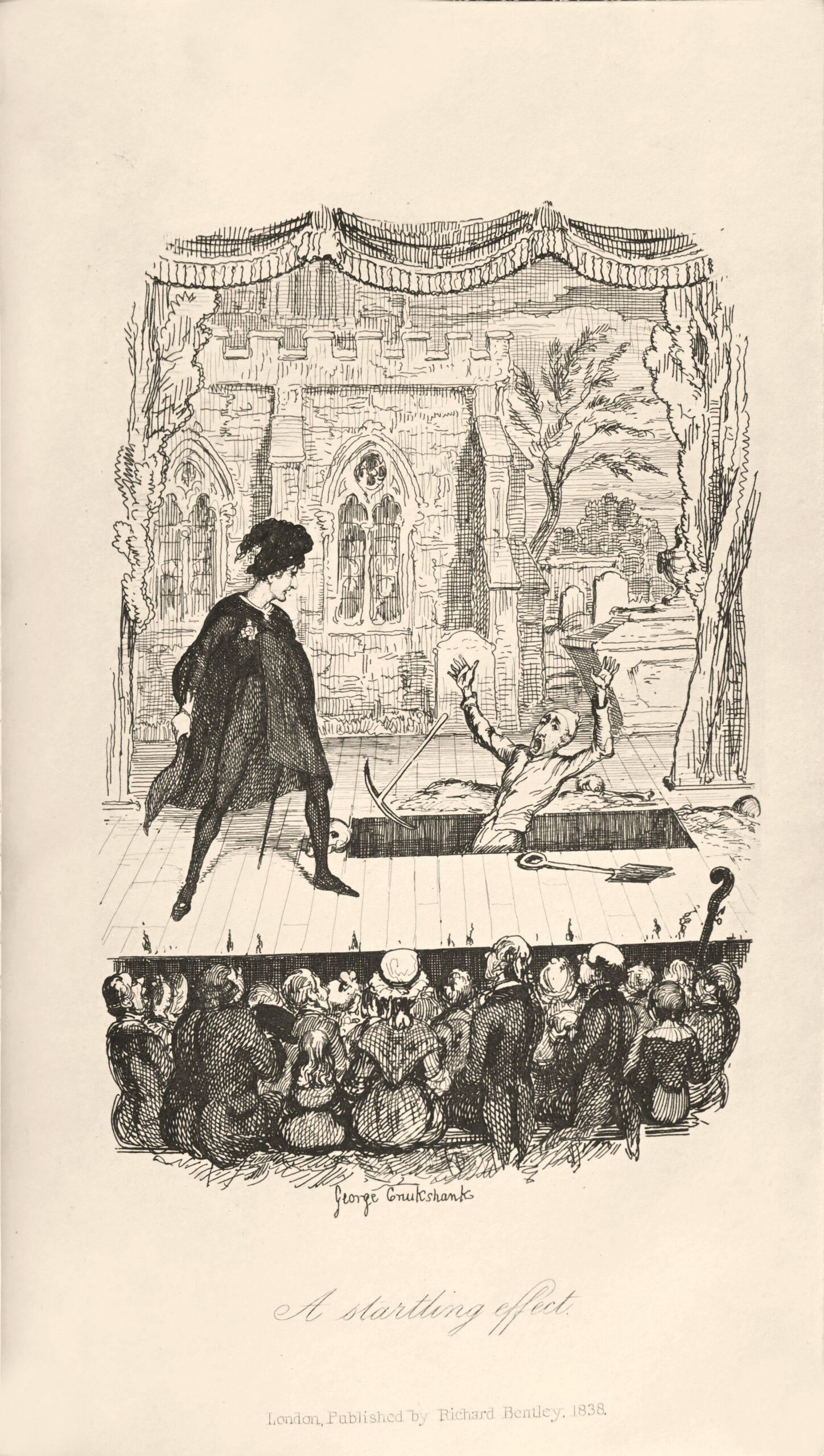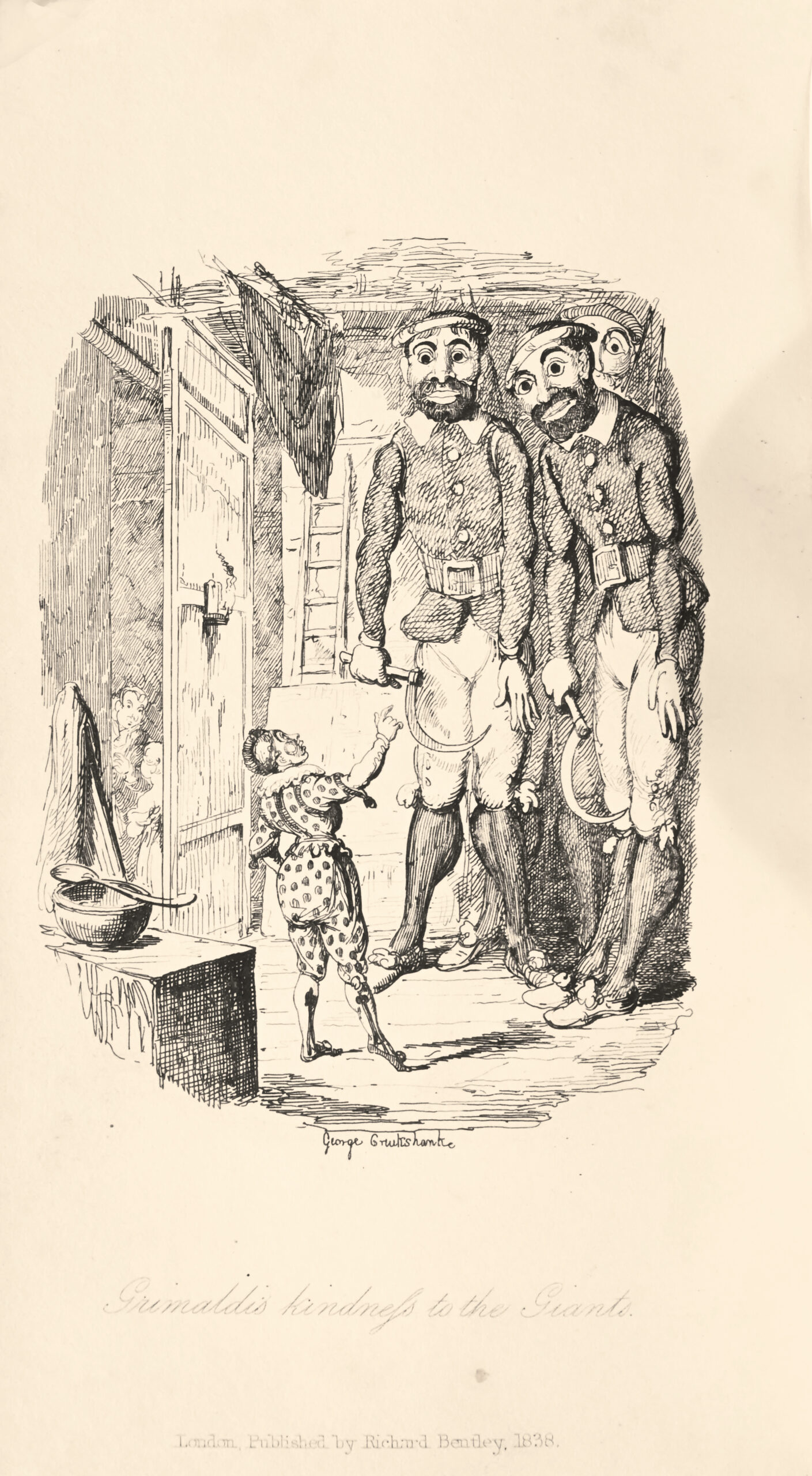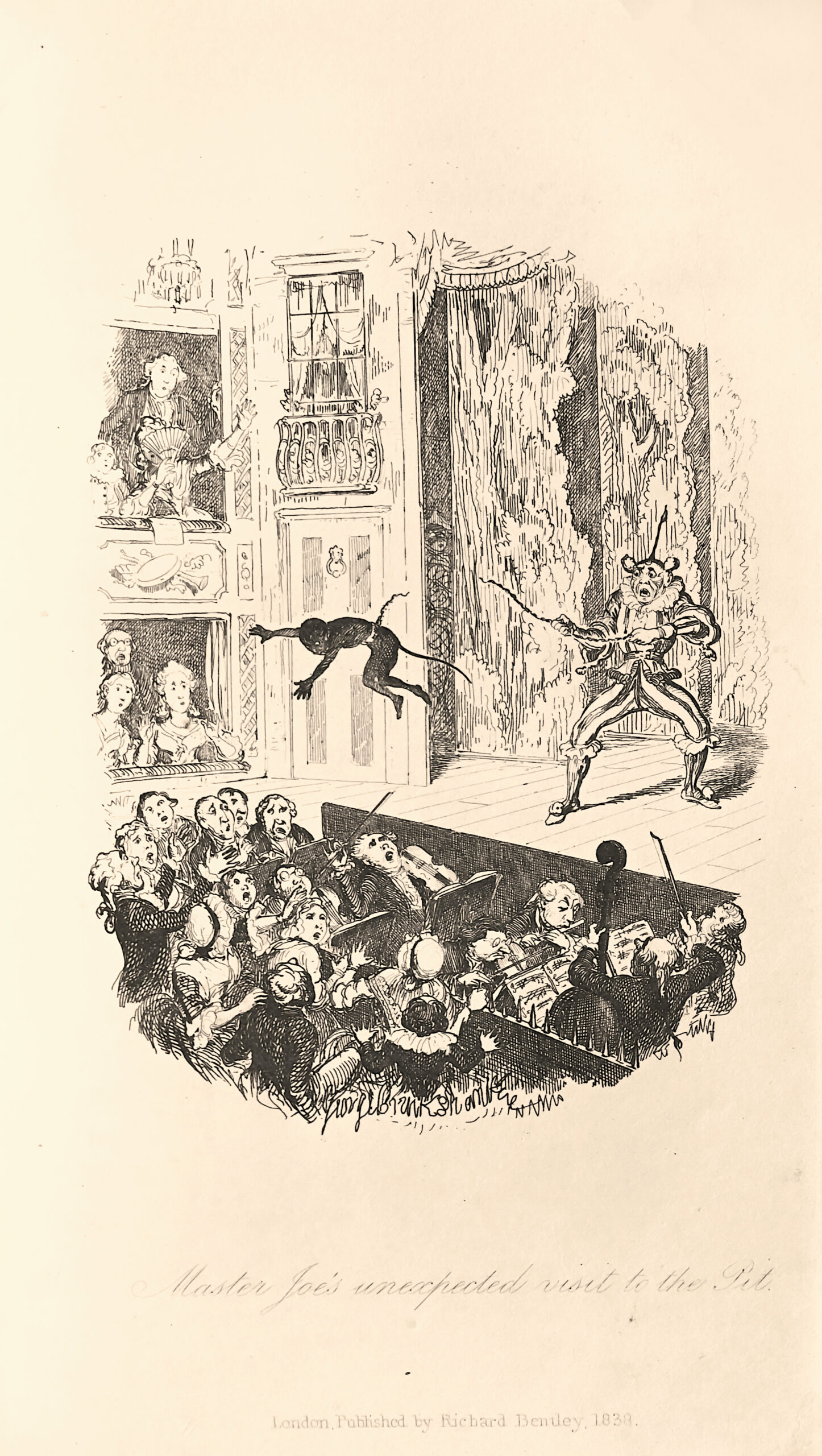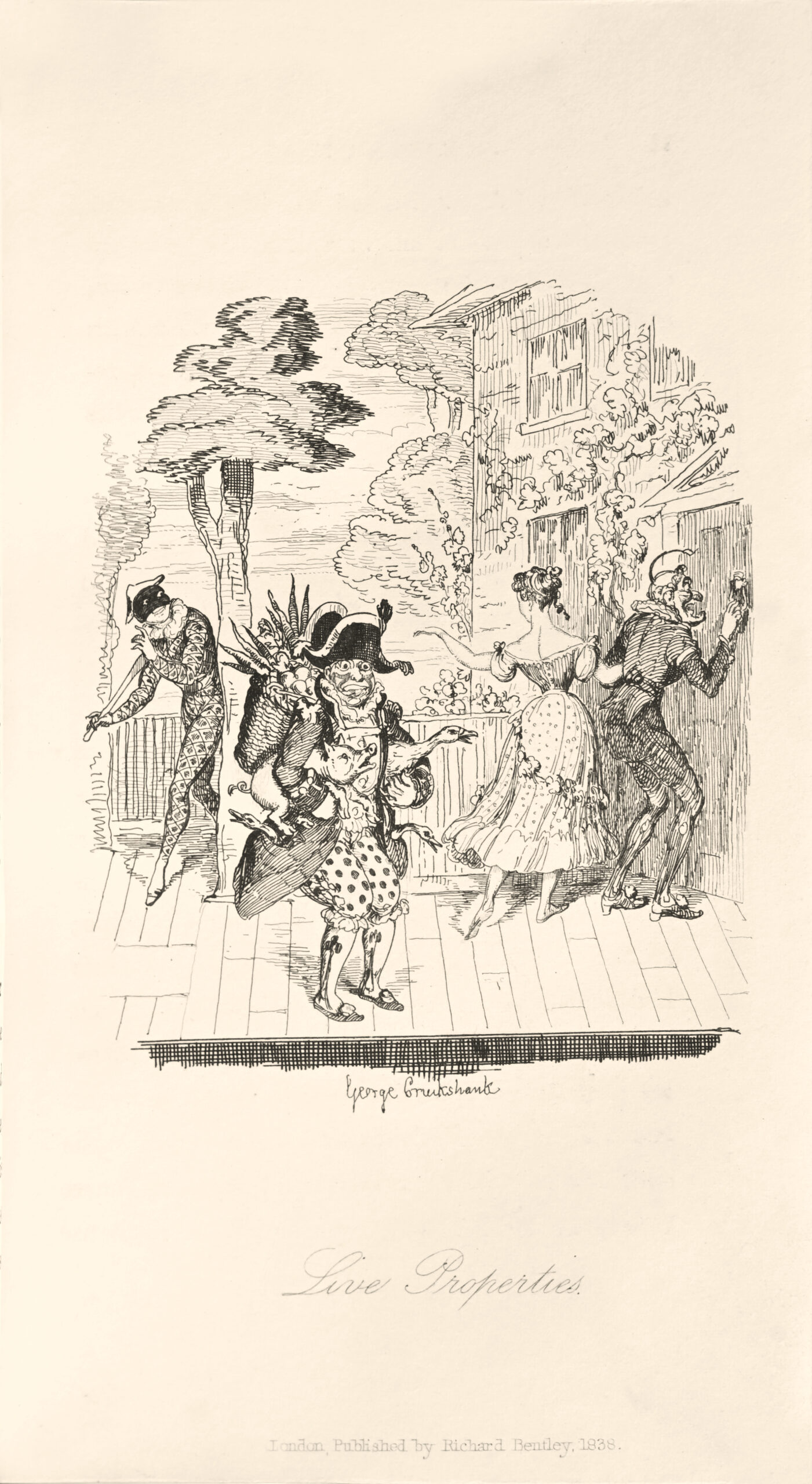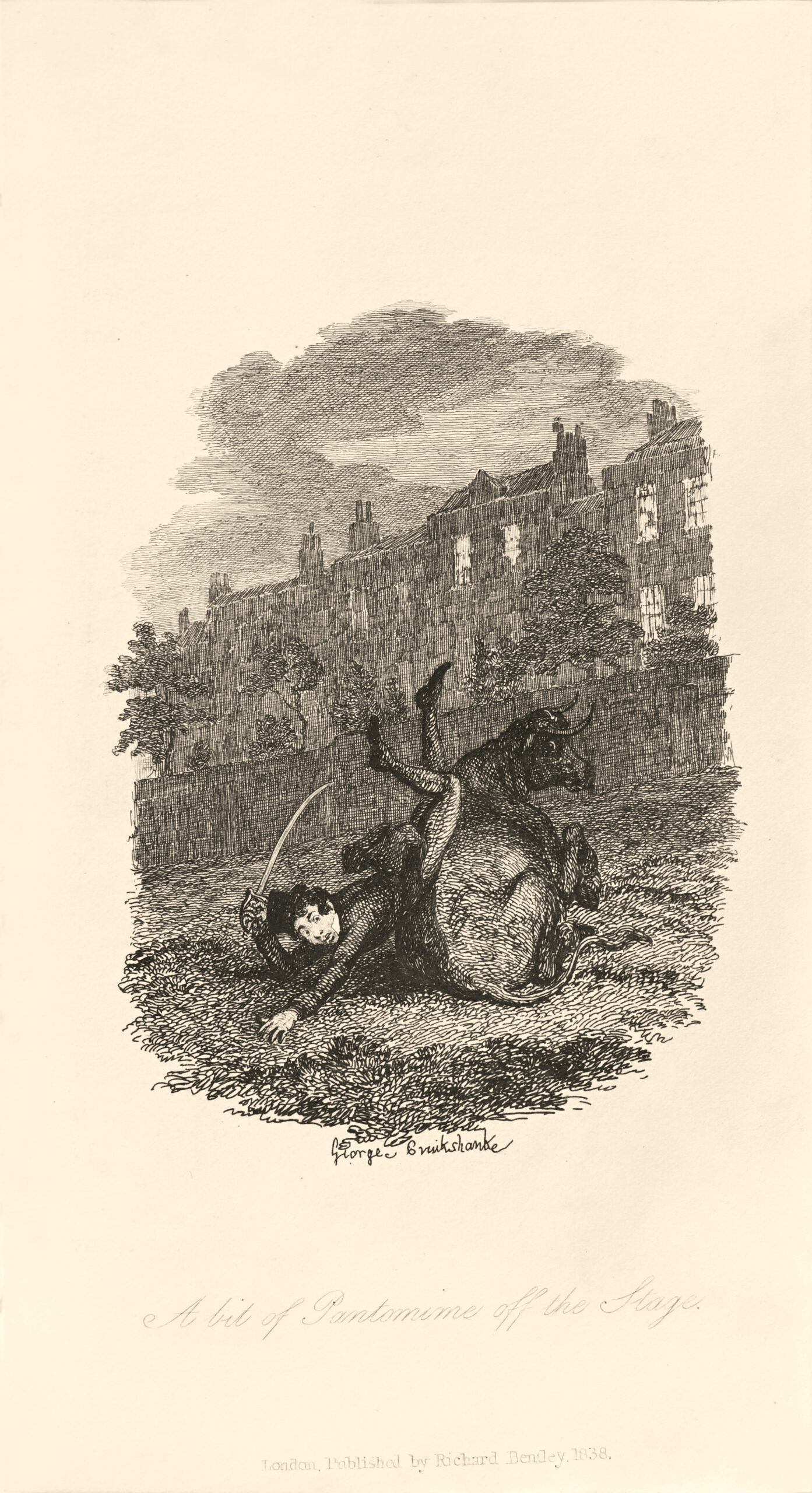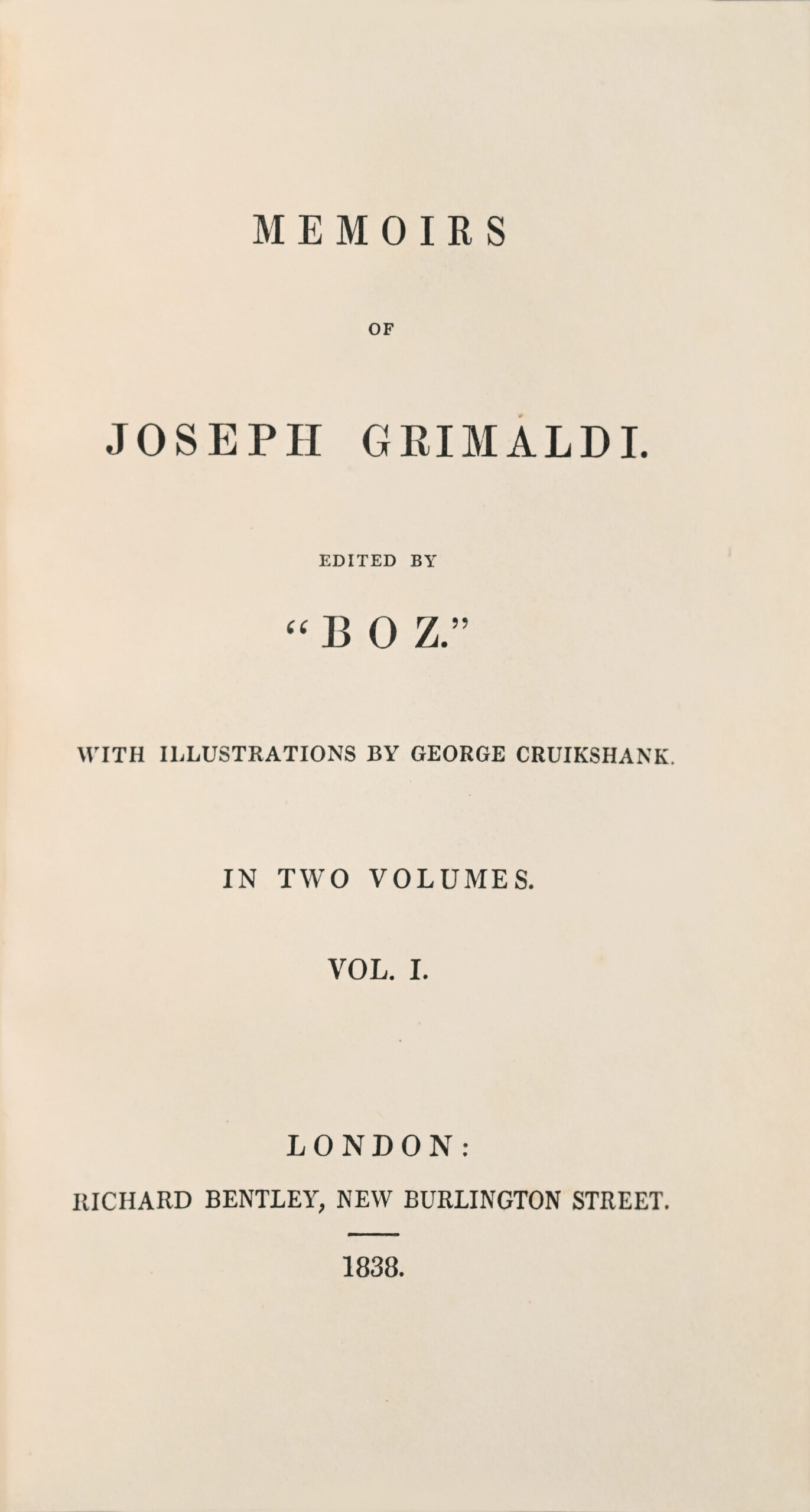London, Richard Bentley, 1838.
2 volumes 12mo of: I/ portrait, xix pp., (1) l., 288 pp., 6 plates; II/ frontispiece, ix, 263 pp., 5 plates. Orange morocco with long grain, triple gilt fillet framing on the boards, ribbed spine with decorations, title and volume labels in green and olive morocco, interior gilt roll, gilt edges, case (Bayntun, Bath).
187 x 110 mm.
First edition of the Memoirs of Joseph Grimaldi (1779-1837), published by Charles Dickens.
First printing without the border added to the plate The last song of the second volume.
Charles Dickens (1812-1870), who began his career as a simple stenographer, later became one of the most popular English novelists with Oliver Twist, Pickwick ou David Copperfield. In his novels, inspired by his painful childhood, he narrates the fate of young heroes who are in search of a better existence and seek to forget their miserable origin. « Master of an ambiguous world where reality constantly leads to dreams », he created characters guided by hope, grappling with a world that, contaminated by the capitalist system, suffers from a social malaise.
An unknown Dickens.
In this biographical novel, which recounts the strange adventures of the greatest English clown of the 19th century, the young Boz already reveals his astonishing storytelling talent.
Here is a work of Dickens almost ignored in France, which was partially translated in 1951, in a confidential edition, now out of print and unobtainable (Éditions du Globe).
The story of this manuscript is quite surprising, and it is through a curious detour that Dickens became the official author: the clown Grimaldi spent the year preceding his death writing the complete history of his life, then entrusted the voluminous manuscript to a friend, who endeavored to condense it before presenting it to a first publisher. This one, taking advantage of the freedom granted by the author’s death, immediately took it to Charles Dickens. In 1838, Charles Dickens was only twenty-five, but under the pseudonym ‘Boz’ was already a beloved author by the public. The Sketches, published in newspapers and magazines which they had made successful, the Pickwick Papers, so swiftly popular, had established his reputation in three or four years. The owner of the Memoirs of Grimaldi therefore had every reason to think that he would benefit greatly if Dickens entirely revised them by deploying his slightly sly simplicity, cunning good nature, deep knowledge of vulgar customs, popular slang, and infamous eccentricities. Dickens, for his part, felt that this was a fortunate subject for his pen, and that it would not derogate by associating it with the memories of a clown, it is true, but a clown unlike any that had been seen before. The life of great Joe, his adventurous career, indeed reveals some of the most curious aspects of British customs, the life of its theaters, and its underworld. Chance, by sowing many strange incidents, dramatic encounters, and bizarre twists in this comedian’s life, seems to have taken delight in making him an extraordinary fate, and thus doubly designating him to the attention of biographers. And in many ways, Dickens undoubtedly saw in this child prodigy and pure-hearted artist a sort of double of himself.
The edition is illustrated with a portrait of the author engraved on copper by William Greatbach (1792-1878) based on a drawing by Samuel Raven (1775-1847), as well as 12 plates, also engraved on copper, by George Cruikshank (1792-1878).
Beautiful copy, printed on vellum paper, in binding by Bayntun, an English bookbinder from Bath.
